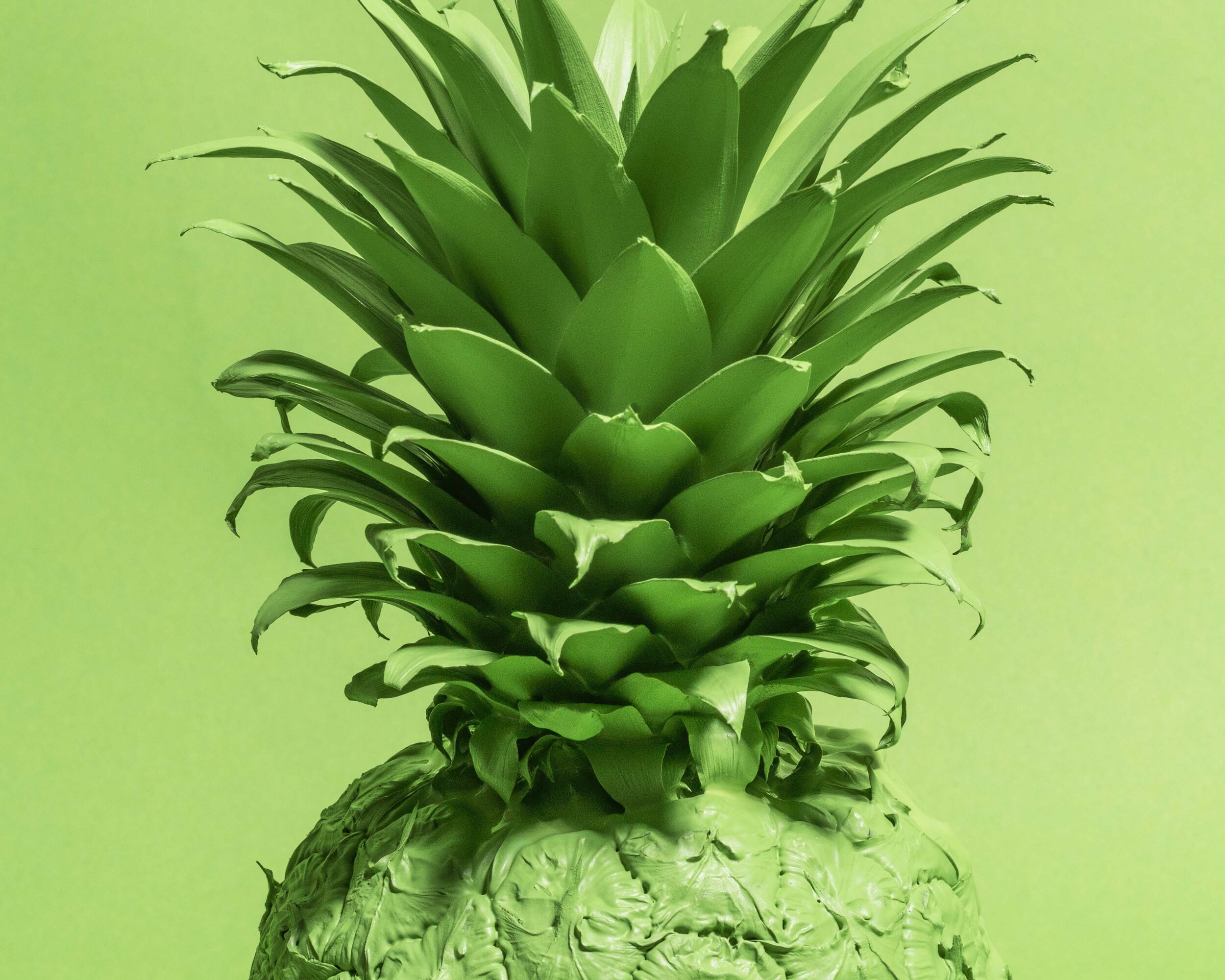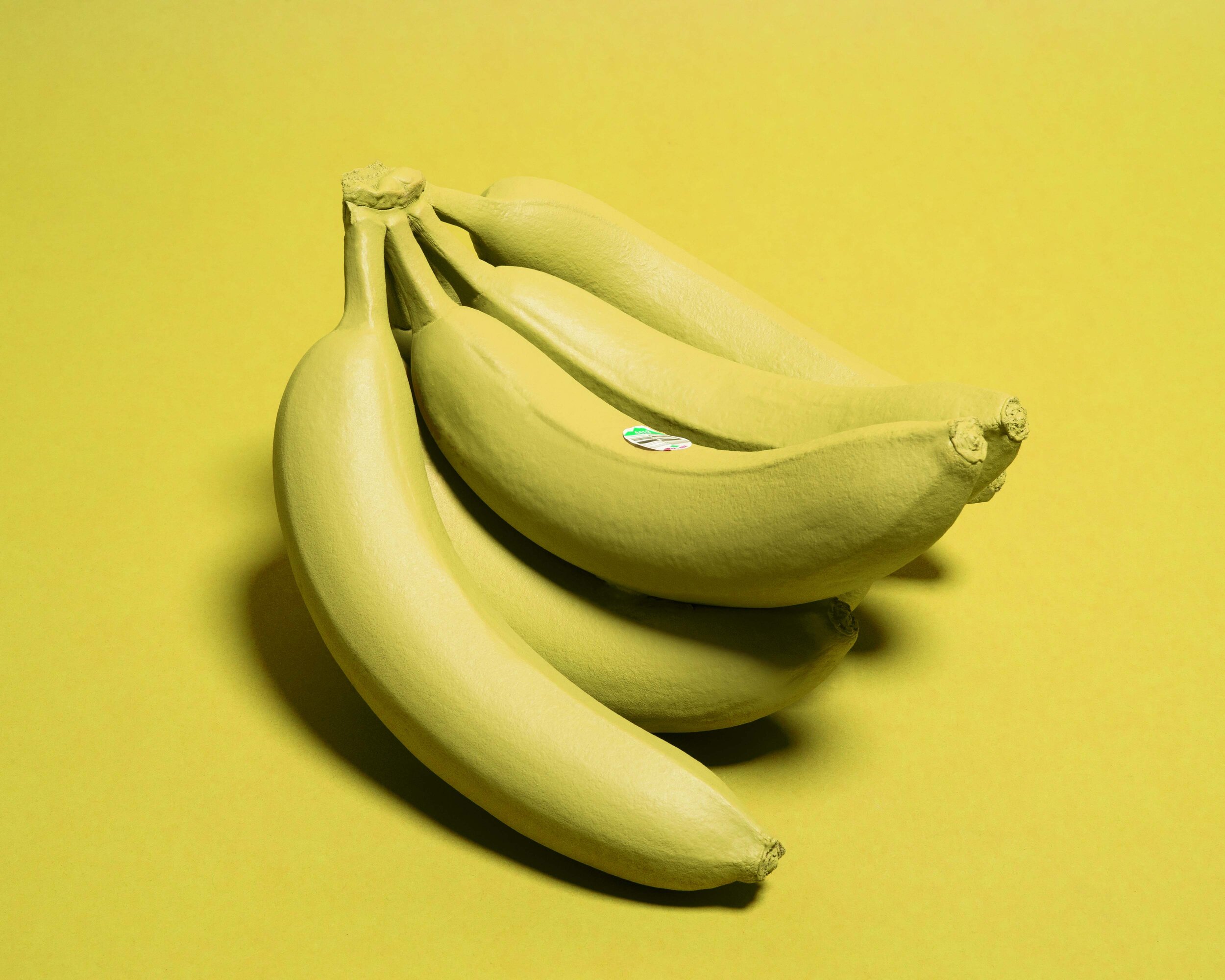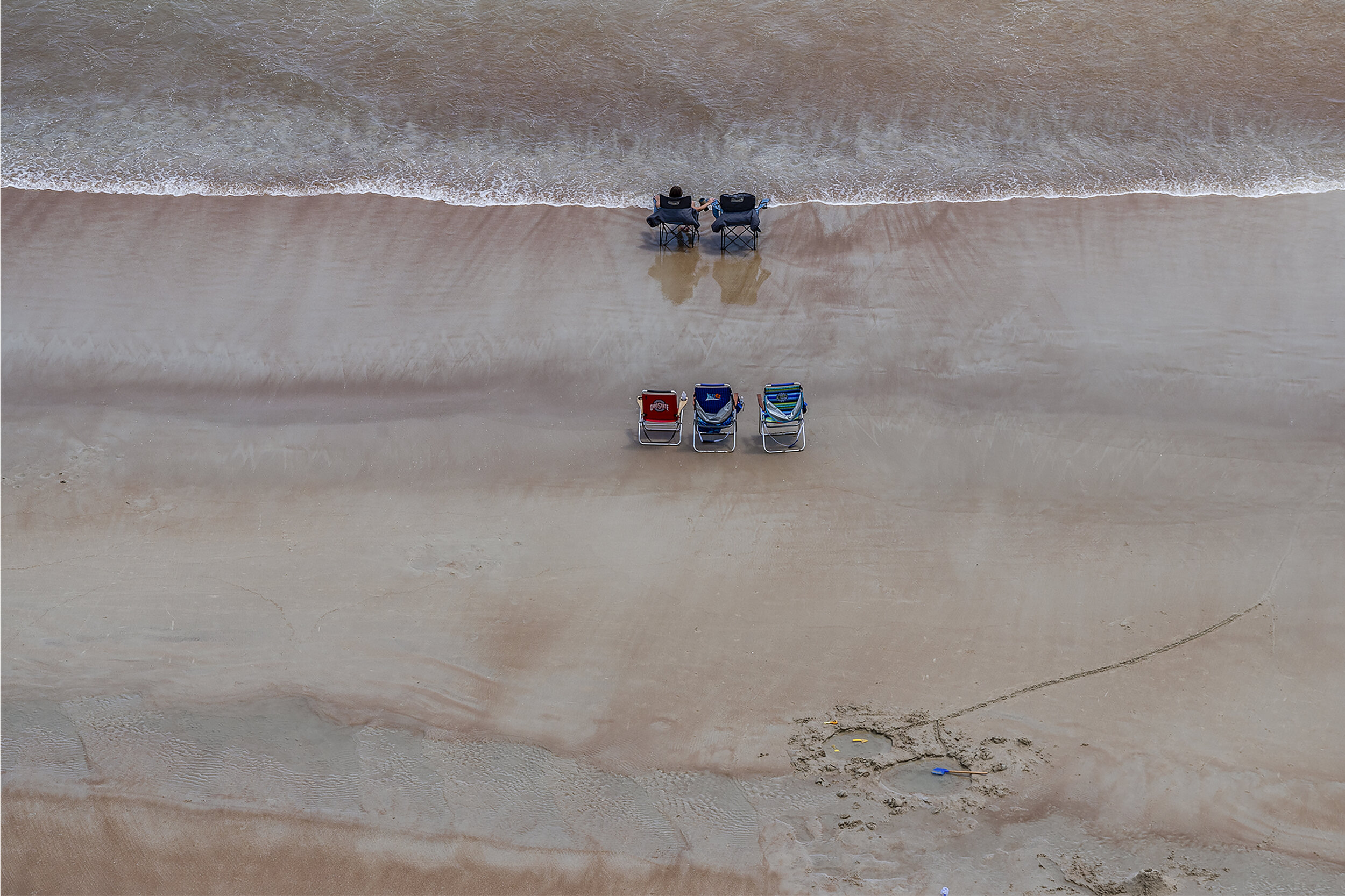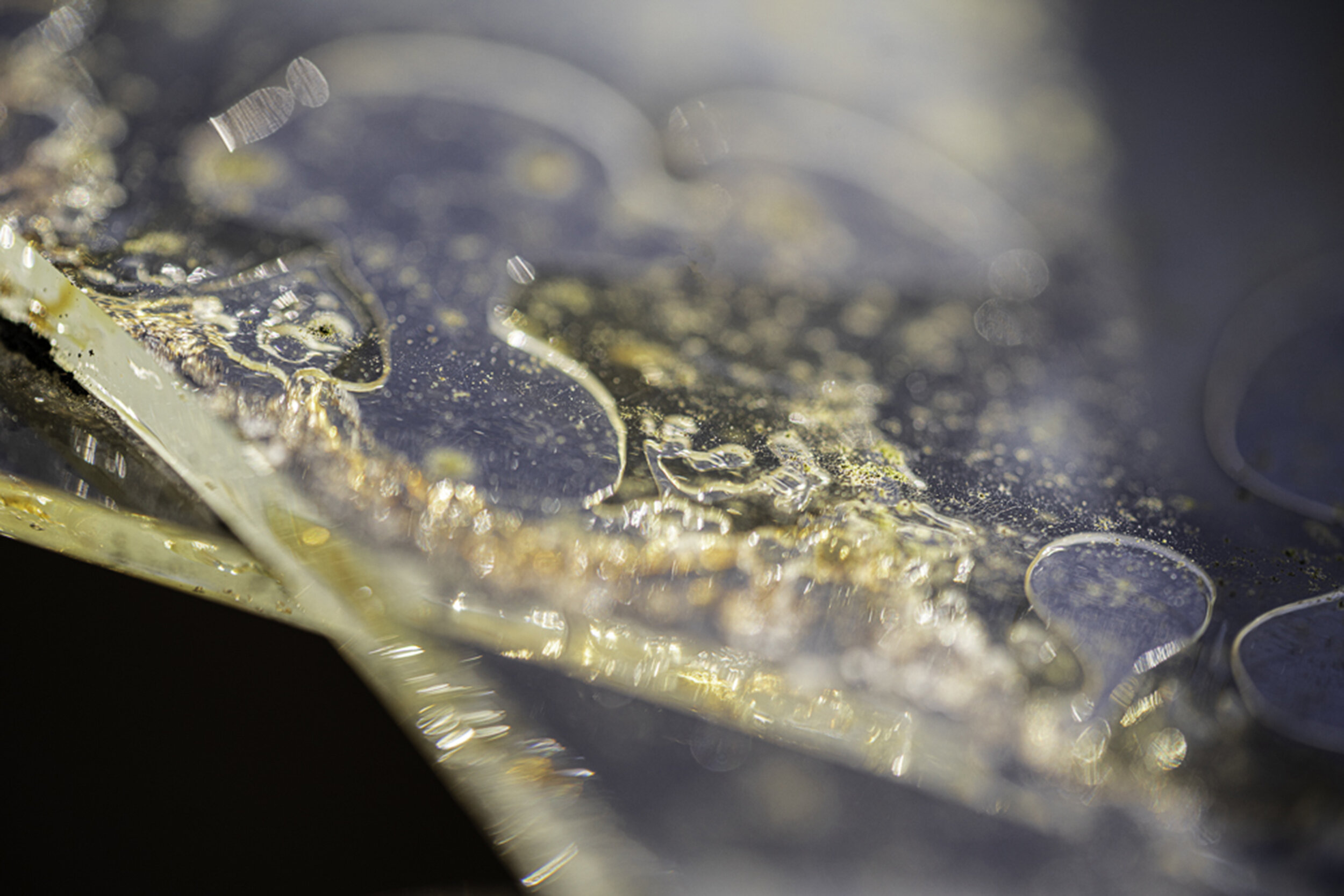THESIS: 2021
May 4th - July 31st, 2021
Portfolios by graduating seniors in the B.S. Degree program in Photography at the University of Central Florida.
Now in its tenth year, the UCF Thesis Exhibition showcases portfolios by graduating seniors of the Bachelor of Science in Photography program at the University of Central Florida - Daytona Beach. The UCF – DSC partnership provides students the opportunity to work with a diverse professional faculty in an environment that encourages excellence and innovative approaches to photography that will position graduates to compete in a rapidly changing industry.
Featuring the work of:
Nicholas Caveda • Rebekah Collins • Jonathan Connell • Casey Helfrich • Lauren Jaffe
Tyler Jenkins • Courtney Kiefer • Julie McKinney • Sam Mcumber • Michele Meyers
India Pantin • Madison Pate • Joe Piaskowski • Annie Scull • Nadia Zomorodian
MEET THE ARTISTS
Nicholas Caveda
The Ripeness Theory
Consumers all over the world have been trained when purchasing fruit in the market, to make sure the fruit is the perfect color and at peak ripeness. Much of this predisposition toward a fruit’s picture-perfect shape or color is something that has been learned by clever marketing and years of farming practices. Mass production farmers are constantly working head-to-head against government regulations in using chemicals to speed up the ripeness of fruit or to make it last longer. These farmers are in competition with one another to have the best looking fruit on the market.
In my series I am calling attention to this artificial process by painting over fresh fruit. Using paint colors of iconic fruit colors, I am mimicking the process of creating the perfect fruit which all farmers hope to achieve. Ironically, by painting the fruit I am making the product more visually desirable while at the same time rendering it inedible. In this process, I am deconstructing or revealing a guide for farmers to show how fruit is “supposed” to look. It is my hope that by being more aware of the manufactured desirability that the agricultural industry propagates, we as consumers need to be more inclusive of healthier, if less colorful, options.
Rebekah Collins
Amare
a·mà·re
Latin word for love
Intimacy. Vulnerability. Trust. The bonds of love and friendship are built on these. My photographs of couples are portrayals of the notion of trust and confidence. They depict a strength brought by familiarity and intimacy, which allows one person to be vulnerable with another.
The photographs are a combination of moments frozen in time, to emulate the feeling of these words. The images rely on the expressive nature of black and white photography; the lack of color helps convey the warmth and passion shared between couples. The intention of these images are to unveil how valuable moments can be and invoke a desire to document these timeless memories.
Jonathan Connell
Shades of Individuality
Shades of Individuality focuses purely on five people’s perception, interpretation, and expression of themselves through their choices in fashion and how they see themselves in front of the camera. With fashion as the backbone of each session, my overall intention and vision for this project was to capture the uniqueness of each of the five people and exhibit their individuality when given one common thread. I shared the same mood board with each person, and based on their perception and interpretation of it, they came to the studio with their choice of clothing. The collaboration was further enhanced by the atmosphere, conversations, and music played as they were different with each model which helped me photograph them in their element. It was interesting to see that as they became more comfortable during the session, their freedom to express themselves increased. The white background used throughout this series enhances the visual interest of the subject, and through the use of hard-light, I underlined the people’s individual features by overlaying shape and linear form between the background and subject which helped emphasize their unique look. To create cohesion between the photographs, I formulated a certain color palate which varies in luminosity and saturation based on the person’s style. Shades of Individuality holds within it the simple design of light and shape yet portrays unique self-expression within these individuals.
CASEY HELFRICH
Chroma
Fashion and beauty photography are designed and created in a way that I’ve always found very different from other genres of photography. These images capture our time period in ways we can only fully appreciate as we move from trend to trend. They don’t only sell a piece of clothing or a trending shade of lipstick but represent an ideal world influenced by the not-so-perfect world we live in. These images are sculpted with light and created in collaboration with many artists of different disciplines. Together with the stylists, make-up artists, and models, we’ve captured our current and up-and-coming color stories that I feel represent the transitional fashion period of today.
Throughout history, Fashion has moved through both predominantly neutral or colorful color trends. But, today, we transition into a much more vibrant period of fashion. Some credit this shift due to society’s ever-growing relationship with social media and how bold, colorful outfits provide the shock value and unique qualities that help those who wear them stand out in a sea of ever-flowing social media posts. As we transition into the early years of this decade, I believe that the vibrant use of color will continue and hold a strong influence over this era’s mainstream fashion identity.
Lauren Jaffee
Shades
The gifting of flowers is a reflection of the hopes and dynamics in a relationship. With the passing of time, change is inevitable. Though they are not the flowers we received, their beauty and stories remain as a testament to what once was.
Tyler Jenkins
Secondhand Style
Trends come and go and as fashion trends fades out from one generation to the next, lots of clothes get donated to the thrift stores. Thrifting became popular in the late 1960’s. This fashion movement resurfaced during the mid 1980’s among teenagers, thus secondhand or hand me downs became popular. Thrift stores began a comeback of a different fashion sense and at a lower cost providing people to buy clothing they would not be able to buy in a regular or high end store. Thrift stores have unique combinations of clothes that people donate from different designers, high end or low end made or clothes that are from different parts of the world. Some of these clothes would never be seen in a typical retail store or affordable to some people.
Younger generations found their own sense of style by shopping at thrift stores. Repurposed clothes give new life to old outdated fashion and or clothes that people no longer liked or fit them. One of the oldest forms of charity is the act of giving away unwanted clothes to the poor. Many people have closets filled with clothes they no longer wear or like and taking them to the thrift store is easy. Today unwanted clothes are getting a new life in many ways, no longer is it just for charity to the poor, but people are now seeking thrift stores for bargain hunting, mix-and-matching styles, colors, textures and making fashion statements that is unique to themselves.
In this series, models used clothes purchased from the thrift store to tell their story. The clothes modeled in the photograph shows who these models are through pieces of re-purposed garments and made it unique to themselves. Whether they were inspired from TV shows, photo magazines, Instagram or how the clothes make them feel as a whole, these models bring their own style to tell their story on camera. Thrift stores bring old fashion to life by the person who buys them and recreate new styles and fashion with them. When it comes to fashion, there are no boundaries to what you wear and thrift stores makes any shopper explore their limits by the low cost and endless varieties of clothes to choose from.
Courtney Kiefer
Kitchen Savior
Personal chef Sevarrest Allen’s creative process recognizes both cooking and food styling as an art form. Allen describes the process as being similar to creating a painting, stating that, “The plate becomes the canvas, and the food is the paint.” In documenting his passion driven process of preparing meals in client’s homes, I am drawing the viewer into the atmosphere built around Allen and each of his creations. My photographs illustrate his skill and creativity rendering meals while sharing Allen’s magnetic personality as he engages his clients through humor and storytelling. Allen’s talent for innovation in the kitchen is reflected in the absence of recipes and measuring instruments. He often arrives with no more than his knife set and a bag of simple and affordable ingredients. He moves quickly and elegantly in a relaxed manner that reveals his contagious joy for cooking which inspires his clients to reflect on their own food choices, bringing new originality into their kitchens.
Allen was raised in Palatka, Florida and graduated from Le Cordon Bleu College of Culinary Arts in Orlando in 2011. As a chef, he created a soul food menu for Disney’s Yacht & Beach Club Convention Center in 2013. His notable client list includes Sir Paul McCartney, the Rolling Stones, and Michelle Obama’s Get Fit Initiative. He currently works locally to spend more time with his family.
My interest in this project is motivated by Allen’s love of cooking and the meticulous process of building unique menus for his clients, ranging from a casual family gathering to a large-scale event. These photographs were created to inspire the viewer to fully experience and appreciate Allen’s culinary artistry and his affectionate approach to the collective kitchen.
Julie McKinney
Square Footage
I have a deep appreciation for well-designed interior living spaces. This series follows the theme of editorial interior design within residentials. My illustrations are composed around modern style and design, incorporating appealing elements that richly represent the architecture of the space.
Ancient Egyptians are typically credited as the early adopters of interior design. Rather than just relying on the comfort of bare necessities, they would make clay pots, use animal skins for textiles, have sculptures and more just for ornamental use. Today, the modern, national language of Egypt is Arabic, so the titles of the images, as seen listed, are a slight nod and appreciation to the country that started it all.
Included in this series of photographs are overall room views as simple elements of design that illustrate clean, crisp decorating styles. Both of which are part of the square footage that makes a house a home.
Sam Mcumber
Structural form
The soul of a building is rooted from its structure and how people move through it. I have captured the way buildings move me around them, push me toward the entrance, and guide me from one side to another. In doing so, I have captured the structure’s form using the meeting point of where the building ends and where the sky begins, accentuating the outline and intersections that make up the architectural structure. By employing carefully selected tones in the building I have created a flow from one side of the image to the other. I have also carefully arranged my images so that all of them guide the viewer from one image to another, much like the buildings physically guide a person through its interior. Architecture can often talk without having any context on the exterior; therefore, I have removed any identifying markings from these structures allowing them to speak for themselves. All sense of scale and size is taken away from the perspective of the viewer to keep the framework a mystery. For example, some could appear to be miniatures, others could be full-sized buildings. The purposeful exclusion of people and identifying markers amplifies the question of scale and proportion and forces the viewer to think about the structural form beyond the initial impression.
Michele Meyers
We are the masters of our own confinement. Within thisvast worldthat is full of endless possibilities, we construct restrictive spaces and build invisiblebarriers, constrainingour potential and creativity. It takes a journey through the desert to realize we need water but wouldn't it be great if we only needed ice cream to escapeour self-imposed,miniature dioramas
India Pantin
Dupes/d(y)o͞op/
Dupes are cheaper products that are comparable to more expensive, often higher quality products. They're usually similar in color and/or consistency. In advertisements, simply the name of the brand has a big part in how effective the ad is in selling the product. A lot of the time, less expensive brands tend to produce underwhelming ads for their products. With this project, I am taking smaller cosmeticbrands that are frequently sold in drug-stores and discount stores and treating them as if they are “high-end”. With photographing them in that way, it will show just how interchangeable these products really are at a visual standpoint. Just by changing the quality of light, the products are heightened in value. Dupes are becoming more popular within our culture because more people are realizing that a lot of these products are extremely similar and the one thing that distinguishes them apart is the label.
Madison Pate
State of Our Plates
Food is a vital part of our cultureand history. Specific foods are often synonymous with a particular region. This is exceedingly true throughout the United States, where different geographic regions havedifferent culinary traditionswhich establish a sense of identity. This photographic series represents several of the 50 states visualized as the food dishes that locals and visitors alike have come to identify as iconic to each state. Regional, agricultural, and historic conditions create a deep and intertwined connection to certain foods within eachlocation
Joe Piaskowski
A Closer Look
We look at thousands of objects duringthe course of a day, but dowereallylook closely at those everyday objects? There aredistinctpatterns, designs,and intricaciesto everything,but we only witness them when we take the time tolook closer. This photo series is an exploration into the finer, smaller details ofday-to-dayitemsin which the subject matter takes on an alien, celestial,ormicroscopic aesthetic. The photographs in this series explore the merging ofcolors, patterns, designs, and texturestobring to light the complexitycontained within the objects. These larger-than-life renderings of inanimate objects illustrate the fact that there is a whole other world beyond what we see with the naked eye
Annie Scull
Anemoia - Nostalgia for a time you’ve never known
I project the abandoned memories of strangers onto myself in an attempt to connect with their subject matter through self portraiture. By exploring these pasts, I find myself searching for belonging through an associated nostalgia. Slide film becomes significant to my photographic process due to its vicarious nature. Being that the exposed film once existed in the same space as these scenes, it carries residual energy from those moments. This body of work serves as the entanglement of time and energies that are compelled to meet one another and their shared loneliness as they maneuver through space.
Nadia Zomorodian
Seed To Table
According to The Organic Farming Research Foundation, they report that 22 percent of organic farmers are women. It says that women are likely to manage smaller farms because they do not generally devote land to field crops. The size of women's farms averages 40 acres while men's farms are often five times larger. An organic farmer I photographed for four months is Pauline Copello, who farms Bok Choy, Hibiscus leaves, Arugula, Slicing Cucumbers, Japanese Turnips, and Rosemary in Barberville, Florida.
She works on her farm five days a week. On Mondays, she harvests , cuts, washes and packs the greens. On Tuesdays, Pauline or her dad delivers greens to Ormond Beach stores. Wednesdays: she prepares soil for transplanting or seeding and removes weeds. Thursdays: Pauline transplants greens and seeds new greens or other vegetables in the trays. Fridays are her busiest days as she again harvests, washes and packs her produce. That night, from six to nine p.m., she sells the fresh vegetables at the Artisan Alley Market in DeLand. The number one thing customers say about her greens are "they taste so fresh and have amazing flavor."
Sponsored in part by the State of Florida, Department of State,
Division of Cultural Affairs and the Florida Council on Arts and Culture.

































